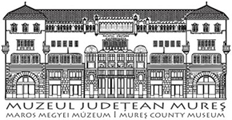Marisia - Maros Megyei Múzeum Évkönyve 30/1. (2010)
Articles
Art and Religions on the Eastern Part of Dacia 97 latter category. The majority of the deities attested at Criste^ti belong to the classical Greek- Roman pantheon: Jupiter, Juno, Mars, Minerva, Mercurius, Hercules, Liber Pater, Hygia, Amor and Silenus. The sphere of the personifications is also attested by a beautiful marble statuette representing genius loci. The Mithraism is represented by an ex-voto marble discovered at Ozd and the vessels decorated with serpents discovered at Criste^ti and Sängeorgiu de Cämpie, which are supposed to have served in the Mithras’ cult.21 The images of other deities such as Attis, Serapis and the ‘Thracian horseman’ illustrate the presence of the Asian (Asia Minor), Syrian, Egyptian and Thraco-Moesian beliefs. As one can observe, only the Celto-Germanic and the North-Western African cults are not represented. The discovery of pottery stamped with crosses together with the palmetto motiP2 could indicate the presence of Christians in the settlement from Criste$ti, but the fact remains, however, questionable. A cross motif appears on a fragmentary stamped pottery discovered in 2004 at Cälugäreni, too.23 The great number and diversity of beliefs which are attested by the different categories of iconographic representations, show two general specific features of the religious life in Roman Dacia.24 In the upper Mure§ area the Greco-Roman gods, including the first official divinities are the most numerous. Oriental divinities are also well represented, mostly dated from the 3rd century, when they became frequent through the whole Empire due to their mystical and esoteric character. This study discusses in parallel the art and religious practices of this area, since the presence of gods and cults can be understood only by analyzing the artistic pieces, like inscriptions, funerary monuments, statues, figurines, terracotta, patera handles, objects which are bearing different iconographic representations. Anthropomorphic pots This type of vessels had a special role. Usually, half of the body represent a human figure in relief. This type of pottery fragments were found only in the Roman settlement of Criste^ti, where only the decorated part preserved. It represents a proportionate human face, with large and deep eyes, thick eyebrows, a Roman nose and opened mouth, without lips and a few teeth. The beard is also reproduced. On the whole, the human figure is grotesque. These pots were used in ritual manifestations. This vessel was made in a local workshop. Similar vessels were found in Dacia at Cumidava and Drajna de Sus.25 From Criste§ti two other pieces of vessels with anthropomorphic representations are known, one of them recreates a Venus pudica, schematically represented in relief, and on another vessel an eye with the iris and eyelids were kept. 21 Zrínyi 1967, 67-68, pl. XLVII/2-3. Vessels decorated with snakes were widely discussed by Bolindet 1993, 123— 141; for the general representation of Mithras see: Vermaseren 1960; Cumont 1989, 131-139; Campbel 1968. 22 Zrínyi 1977, 96, pl. LII/2; Rusu 1984, 59, nr. 27; Gudea-Ghiurco 1988, 197. 23 Man 2006, 113-117, pl. II/3. 24 Bärbulescu 1984, 180-183. 25 Gudea-Pop 1971, 49; fig. 45; Stefan 1947, 131-132, fig. 13/1-3.
